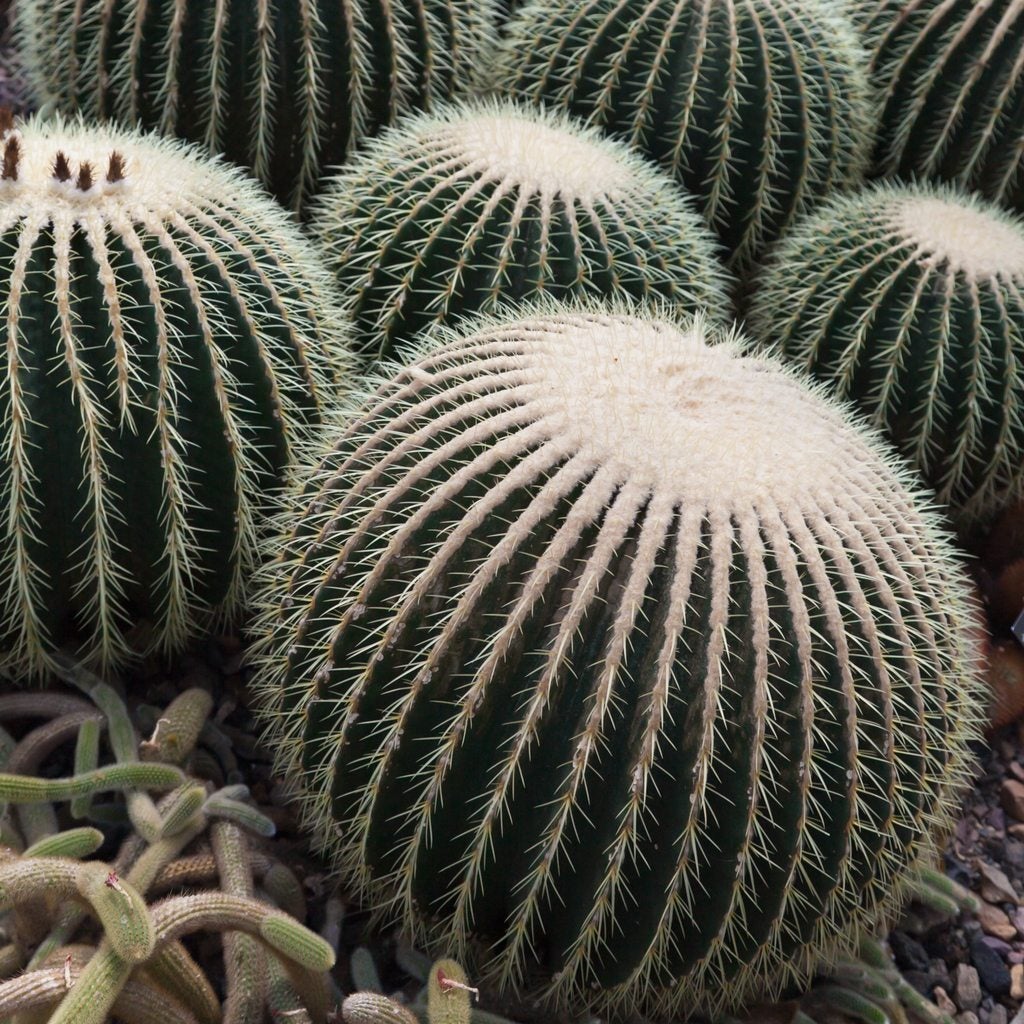Ferocactus Plant Info – Growing Different Types Of Barrel Cacti


Fascinating and easy to care for, barrel cactus plants (Ferocactus and Echinocactus) are quickly recognized by their barrel or cylindrical shape, prominent ribs, showy blooms and fierce spines. A wide range of barrel cactus varieties are found in the gravelly slopes and canyons of the Southwestern United States and much of Mexico. Read on and learn about a few of the most popular barrel cactus varieties.
Ferocactus Plant Info
Barrel cactus varieties share much in common. Flowers, which appear at or near the top of the stems between May and June, may be various shades of yellow or red, depending on the species. Flowers are followed by elongated, bright yellow or off-white fruits that retain the dried blooms. The stout, straight or curved spines may be yellow, gray, pinkish, bright red, brown or white. The tops of barrel cactus plants are often covered with cream- or wheat-colored hair, especially on older plants. Most barrel cactus varieties are suitable for growing in the warm environment of USDA plant hardiness zones 9 and above, although some tolerate slightly cooler temperatures. Don’t worry if your climate is too chilly; barrel cacti make attractive indoor plants in cooler climates.
Types of Barrel Cacti
Here are some of the more common kinds of barrel cactus and their attributes: Golden barrel (Echinocactus grusonii) is an attractive bright green cactus covered with lemon-yellow flowers and golden yellow spines that lend the plant its name. Golden barrel cactus is also known as golden ball or mother-in-law cushion. Although it is widely cultivated in nurseries, golden barrel is endangered in its natural environment. California barrel (Ferocactus cylindraceus), also known as desert barrel or miner’s compass, is a tall variety that displays yellow blooms, bright yellow fruit, and closely-spaced downward-curved spines that may be yellow, deep red or off-white. California barrel cactus, found in California, Nevada, Utah, Arizona and Mexico, enjoys a much larger territory than any other variety. Fishhook cactus (Ferocactus wislizenii) is also known as Arizona barrel cactus, candy barrel cactus or Southwestern barrel cactus. Although the clusters of curved white, gray or brown, fishhook-like spines are rather dull, the reddish-orange or yellow flowers are more colorful. This tall cactus often leans to the south so much that mature plants may eventually tip over. Blue barrel (Ferocactus glaucescens) is also known as glaucous barrel cactus or Texas blue barrel. This variety is distinguished by blue-green stems; straight, pale yellow spines and long-lasting lemon-yellow flowers. There is also a spineless variety: Ferocactus glaucescens forma nuda. Colville’s barrel (Ferocactus emoryi) is also known as Emory’s cactus, Sonora barrel, traveler’s friend or nail keg barrel. Colville’s barrel displays dark red flowers and white, reddish or purple-tinted spines that may turn gray or pale gold as the plant matures. Blooms are yellow, orange or maroon.
Sign up for the Gardening Know How newsletter today and receive a free copy of our e-book "How to Grow Delicious Tomatoes".

A Credentialed Garden Writer, Mary H. Dyer was with Gardening Know How in the very beginning, publishing articles as early as 2007.